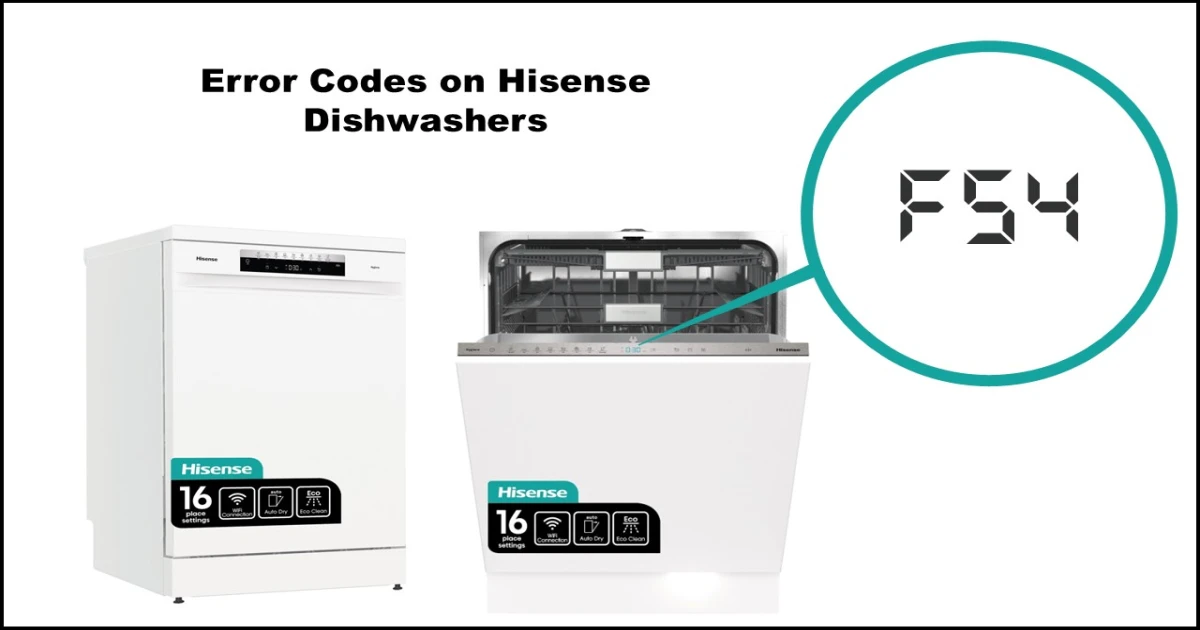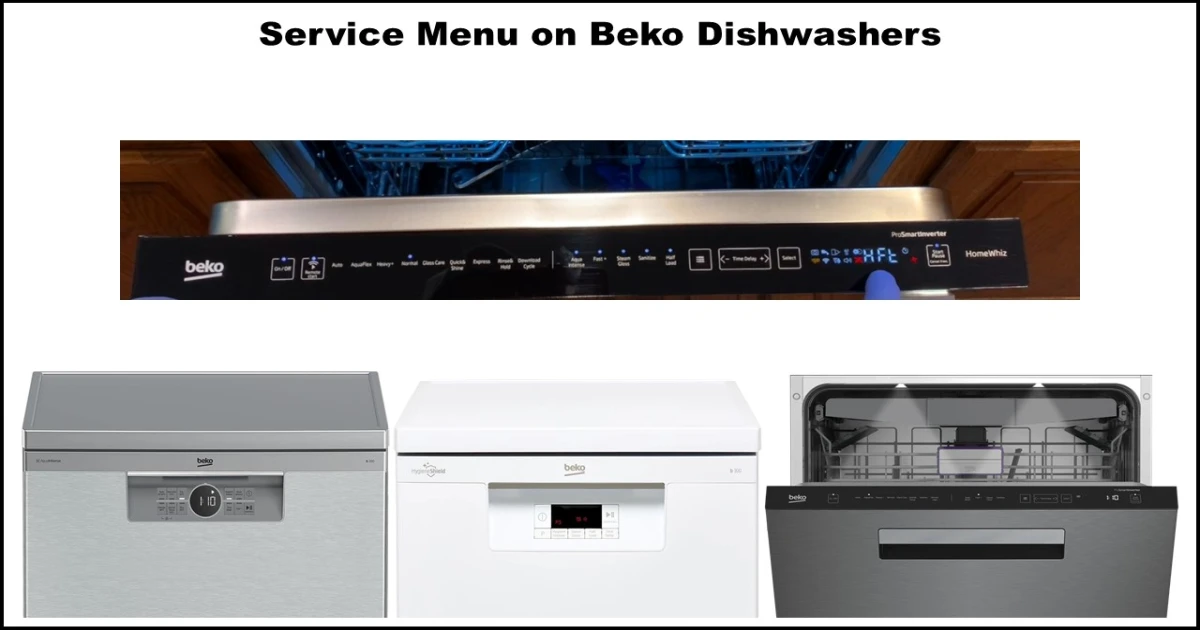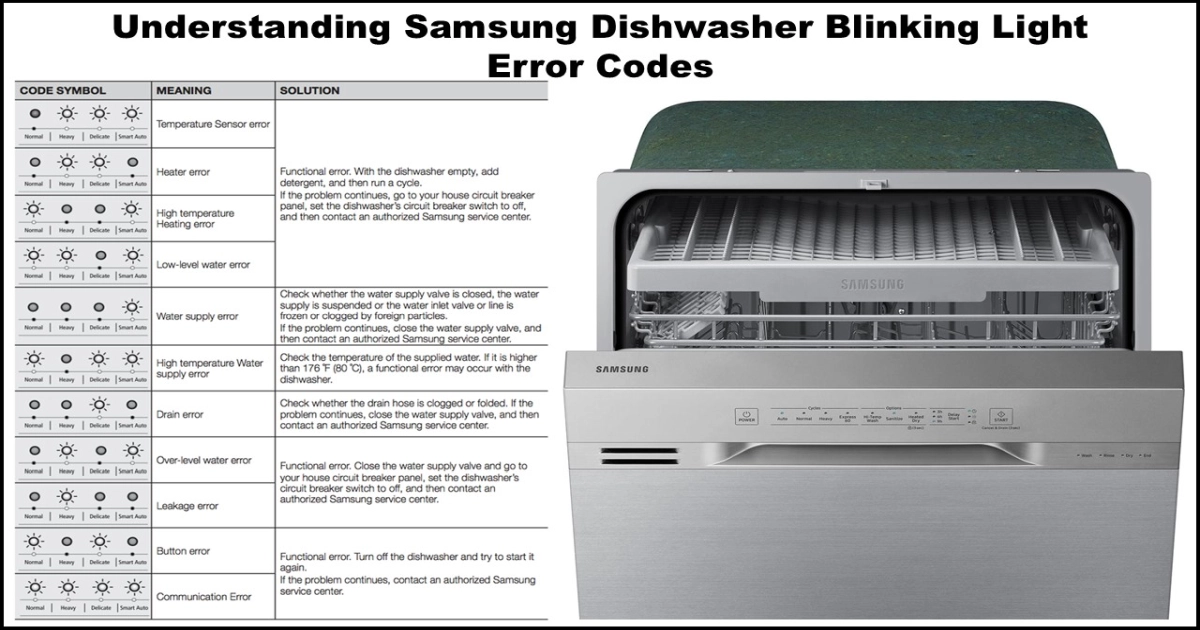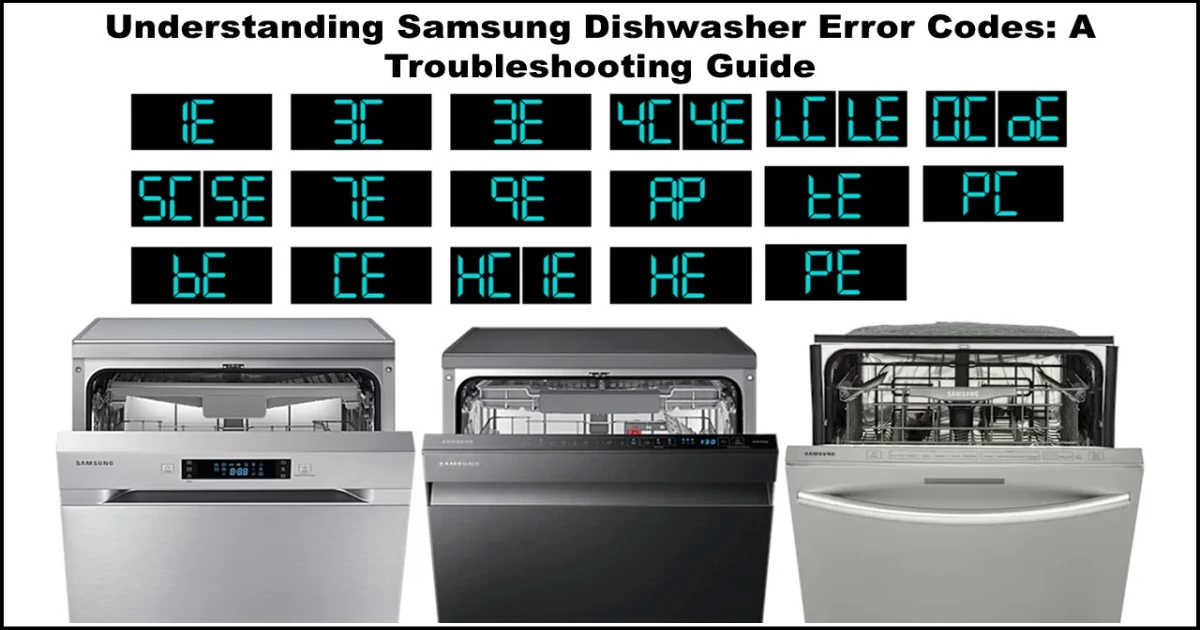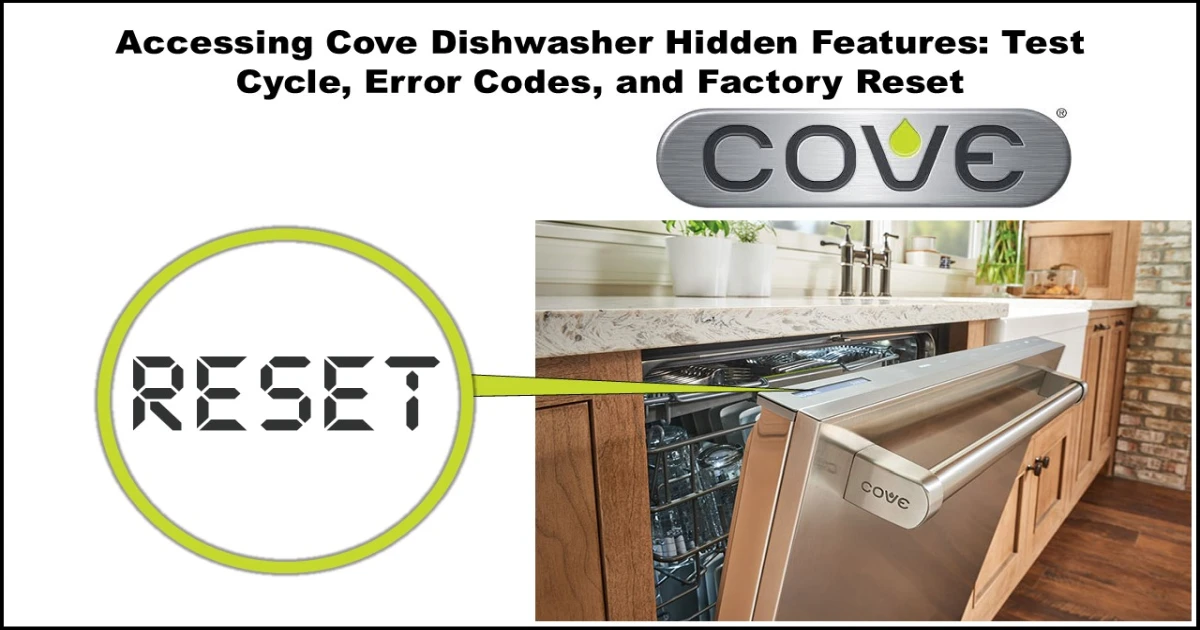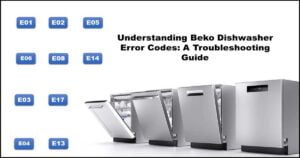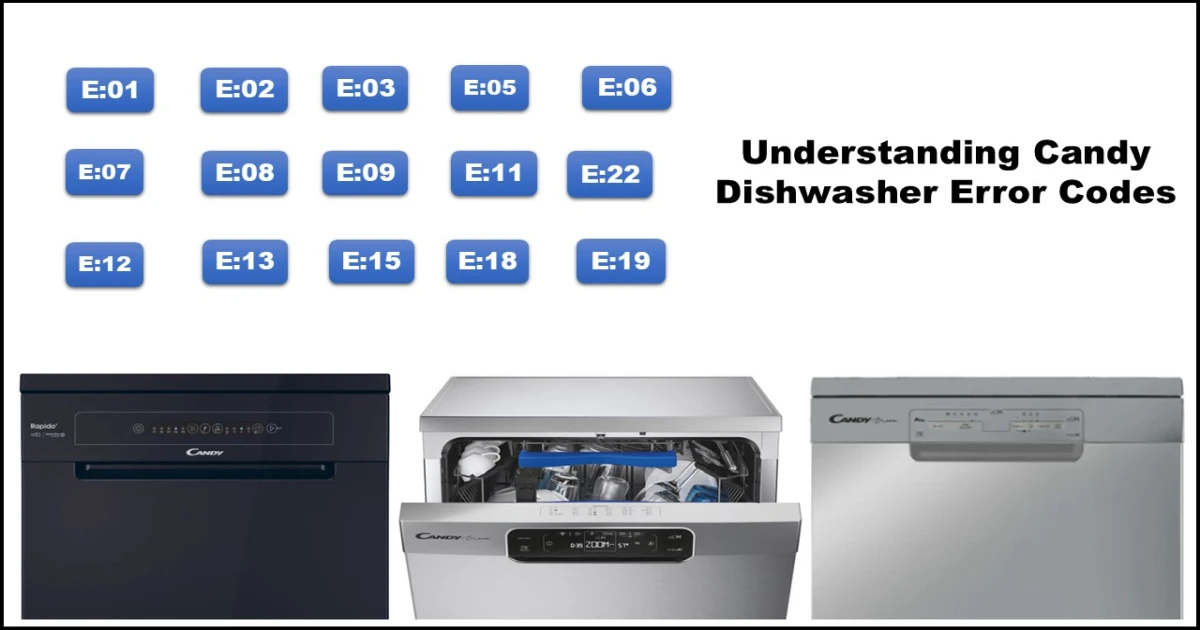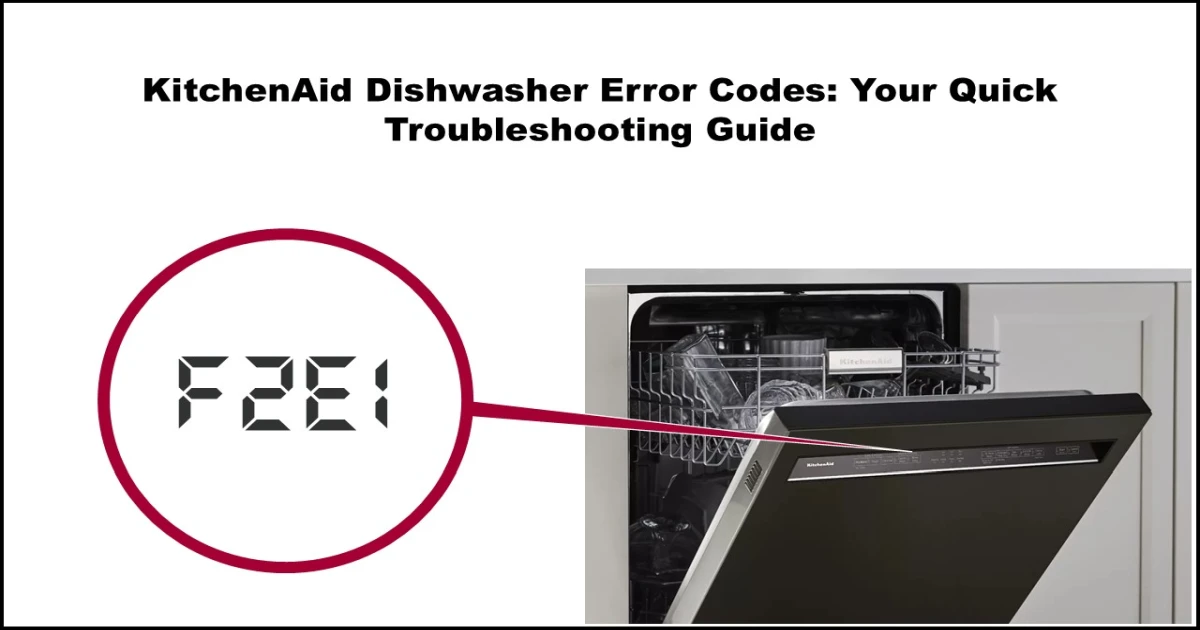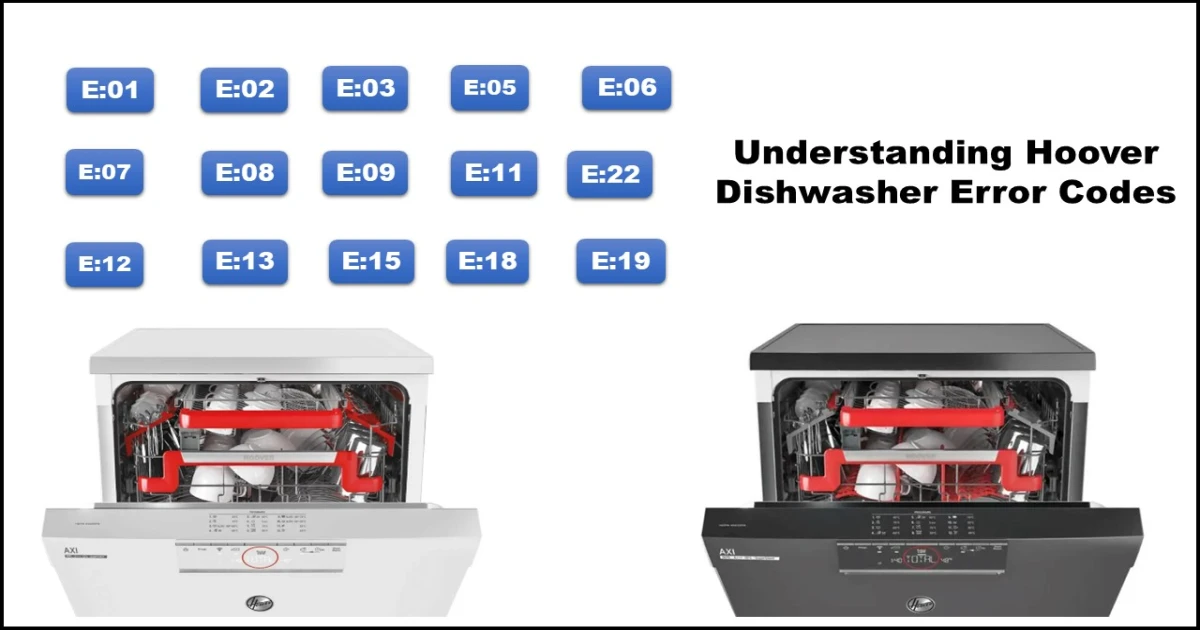Your Guide to Troubleshoot your Electrolux Dishwasher Error Codes
This comprehensive guide breaks down common Electrolux dishwasher error codes, explaining their likely causes and providing actionable troubleshooting steps you can take. While some issues may require professional attention, many can be resolved with a little know-how, potentially saving you time and money on service calls.
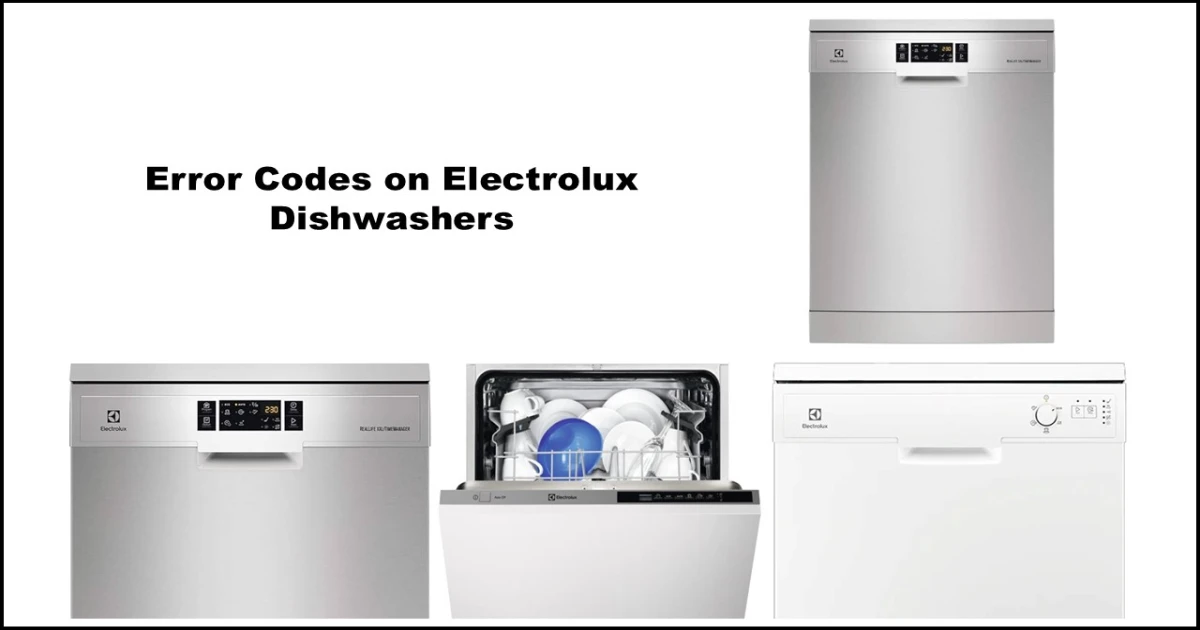
Before you begin: Always unplug your Electrolux dishwasher or switch off the power at the circuit breaker before attempting any inspection or repair. Refer to your appliance’s user manual for model-specific information and safety guidelines.
Here’s a breakdown of common Electrolux dishwasher error codes:
Water Supply and Filling Issues
i10, i11, iF0, iF1: Water Fill Valve Error or Overfilling Detected
These codes generally indicate a problem with the dishwasher’s water supply or that the appliance has detected an overfill situation.
Possible Causes:
- Closed water tap.
- Low water pressure.
- Kinked or blocked inlet hose.
- Clogged inlet valve filter.
- Faulty water inlet valve.
- Drain hose positioned too low, causing siphoning.
- Faulty pressure sensor or its hose is obstructed, bent, or leaking.
- Faulty wiring to the inlet valve or pressure sensor.
- Issues with the flow meter (if applicable to your model).
- Leaking in the base of the appliance (for iF0, iF1).
- Faulty main control board.
Troubleshooting Steps:
- Check the Water Supply: Ensure the water tap supplying the dishwasher is fully open and that there is adequate water pressure. The recommended water pressure is typically between 40 and 80 psi. If your home’s water pressure is consistently low, a plumber may need to investigate.
- Inspect the Inlet Hose: Examine the water inlet hose for any kinks, bends, or visible blockages. Ensure it’s securely connected to both the water source and the dishwasher.
- Clean the Inlet Valve Filter: Locate the filter on the water inlet valve (where the hose connects to the dishwasher). Turn off the water supply, disconnect the hose, remove the filter, and rinse it clean under running water.
- Check Drain Hose Position: The drain hose should be looped up higher than the dishwasher’s base (typically at least 40 cm or about 16 inches) before connecting to the drain. This prevents water from continuously draining out while the dishwasher is trying to fill.
- Inspect for Leaks (iF0, iF1): If you suspect overfilling or a leak in the base, carefully inspect the hoses, connections, and the bottom tray of the dishwasher for any signs of water. A small amount of water in the base can trigger the flood switch.
- Examine Wiring: Visually inspect the wiring harnesses connected to the water inlet valve and the pressure sensor for any signs of damage or loose connections.
- Consider Component Testing (Advanced): If you’re comfortable using a multimeter, you can test the resistance of the water inlet valve solenoid. Typical values are around 0.9−1.1KΩ at 120V AC or 2.8−3.3KΩ at 220V AC.
Water Drainage Issues
i20: Water Drainage Error
This code indicates that the dishwasher is not draining water properly.
Possible Causes:
- Clogged or kinked drain hose.
- Blocked drain pump filter.
- Obstruction in the drain pump or drainage system.
- Drain hose connected too high (should be no more than 60 cm or about 24 inches above the appliance base).
- Faulty drain pump.
- Faulty pressure sensor.
- Faulty wiring to the drain pump or pressure sensor.
- Faulty main control board.
Troubleshooting Steps:
- Check and Clear the Drain Pump Filter: This is the most common cause of drainage issues. Locate the filter at the bottom of the dishwasher tub, remove it according to your manual, and thoroughly clean it of food debris and buildup.
- Inspect the Drain Hose: Ensure the drain hose is not kinked, bent, or blocked. Verify that its connection to the under-sink plumbing or garbage disposal is clear. If connected to a garbage disposal, ensure the knockout plug has been removed.
- Check Drain Hose Height: Confirm the drain hose is not elevated more than 60 cm (approx. 24 inches) above the dishwasher’s base.
- Inspect the Drain Pump Impeller: With the power off and the filter removed, you may be able to visually inspect the drain pump impeller for any large objects or debris obstructing its movement. Be cautious when doing this.
- Examine Wiring: Check the wiring harness connecting the drain pump to the main control board for any damage or loose connections.
- Consider Component Testing (Advanced): Using a multimeter, you can test the resistance of the drain pump motor. For a single-phase pump, expect values around 15−18Ω at 120V AC or 180−230Ω at 220V AC. For a BLDC (brushless DC) drain pump, the resistance between any two of the three terminals (U, V, W) should be approximately 90Ω.
Recommendation to Prevent Drain Problems: Regularly clean the drain pump filter and avoid overloading the dishwasher or using excessive detergent, as these can contribute to blockages.
Water Overflow and Leakage
i30, i36: Water Overflow Error
These codes indicate that the dishwasher’s leak detection system has been triggered, usually due to water pooling in the base tray.
Possible Causes:
- Leakage from hoses, connections, or seals.
- Faulty water inlet valve that is not closing properly.
- Leaking door gasket or interior lamp seal.
- Blocked or faulty float sensor or float microswitch in the base tray.
- Drainage problem (leading to water backing up).
- Faulty main control board.
Troubleshooting Steps:
- Identify the Leak Source: Carefully inspect the interior and exterior of the dishwasher, including all hoses, connections, the door gasket, and the area beneath the appliance, for any signs of water leaks. The presence of rust or water trails can help pinpoint the source.
- Check Drainage System: As drainage issues can lead to overfilling, review the troubleshooting steps for the i20 error code and ensure the drain system is clear and functioning correctly.
- Inspect the Float Sensor: The float sensor is located in the base of the dishwasher. Check if it’s obstructed or stuck, preventing it from signaling the correct water level. Visually inspect the float and its associated microswitch and wiring harness connection.
- Consider Component Testing (Advanced): If you can access the float microswitch, you can test its continuity with a multimeter to ensure it’s functioning correctly when the float is activated.
Pressure Sensor Issues
i40, i41, i42, i43, i44, i45, i46: Pressure Sensor Error
These codes relate to issues with the dishwasher’s pressure sensor, which measures the water level.
Possible Causes:
- Clogged sump or pressure sensor tube.
- Faulty pressure sensor.
- Faulty wiring harness to the pressure sensor.
- Faulty main control board.
Troubleshooting Steps:
- Clean the Sump and Pressure Sensor Tube: Food debris and sediment can clog the sump area at the bottom of the dishwasher and the small tube leading to the pressure sensor. Clean these areas thoroughly.
- Check Wiring: Inspect the wiring harness between the main control board and the pressure sensor for any damage or loose connections.
- Check Pressure Sensor Voltage (Advanced): With the power on (exercise caution!), you can use a multimeter to verify that the pressure sensor is receiving the correct voltage (typically +5V DC) from the main board. If not, the main board may be faulty. You can also observe the frequency signal from the sensor (typically around 44.6 Hz with the hose disconnected), although interpreting this requires technical knowledge.
- Consider Replacing the Pressure Sensor: If the wiring and cleaning steps don’t resolve the issue, the pressure sensor itself may be faulty and require replacement.
Wash Motor and Circulation Issues
i50, i51, i52, i53, i54, i55, i56, i57, i58, i59, i5A, i5B, i5C, i5D, i5E, i5F: Wash Motor Error
These codes indicate a problem with the main wash motor (circulation pump) or in some cases, the drain motor. The specific sub-code provides more detail about the nature of the motor issue (e.g., overcurrent, locked rotor, communication error).
Possible Causes:
- Obstruction in the wash pump impeller.
- Faulty wash pump motor or capacitor (for asynchronous motors).
- Faulty BLDC (variable speed) wash motor or drain motor.
- Faulty wiring harness to the wash or drain motor.
- Faulty main control board.
Troubleshooting Steps:
- Check for Obstructions: Ensure there are no foreign objects (like broken glass or food particles) obstructing the wash pump impeller. Always ensure the power is off before attempting this.
- Examine Wiring: Inspect the wiring harnesses connected to the wash motor and drain motor for any damage or loose connections.
- Consider Component Testing (Advanced): You can test the resistance of the wash motor windings or the BLDC motor terminals using a multimeter. Refer to your service manual or online resources for the specific resistance values for your model. For example, an asynchronous wash motor might have main winding resistance around 92Ω and auxiliary winding resistance around 128Ω at 220V AC, with a capacitor around 4μF. A BLDC wash pump motor might have around 52Ω between terminals U, V, and W. A BLDC drain pump might have around 90Ω between U, V, and W.
Heating System Issues
i60, i61, i62, i63, i64, i65, i66, i67, i69, i6A, i6B, i6C: Heating Element Error
These codes relate to problems with the dishwasher’s heating system, including the heating element, thermostat, and temperature sensor (NTC). The dishwasher monitors temperature increase during heating phases, and failure to meet the expected rise can trigger these codes.
Possible Causes:
- Faulty heating element.
- Faulty thermostat or thermal fuse.
- Faulty NTC thermistor (temperature sensor).
- Calcium buildup on the heating element.
- Weak wash motor rotation or broken impeller (can cause localized overheating).
- Faulty heating element relay on the main board.
- Faulty wiring harness to the heating system components.
- Faulty main control board.
Troubleshooting Steps:
- Check Wiring Connections: Ensure the wiring connections to the heating element, thermostat, and NTC sensor are secure and undamaged.
- Check for Calcium Buildup: Inspect the heating element for excessive calcium deposits, which can hinder its performance.
- Consider Component Testing (Advanced): Use a multimeter to test the resistance of the heating element (typically around 17Ω at 120V AC or 28Ω at 220V AC), the thermostat/thermal fuse (should have very low resistance, close to 0.1−1.2Ω when closed and at correct temperature), and the NTC thermistor (resistance varies with temperature, around 4.8KΩ at 25°C/77°F).
Temperature Sensor Issues
i70: NTC Sensor Value Out of Range
This code specifically indicates an issue with the NTC thermistor, which is responsible for accurately measuring the water temperature.
Possible Causes:
- Faulty NTC thermistor.
- Faulty wiring harness to the NTC sensor.
- Faulty main control board.
Troubleshooting Steps:
- Check Wiring: Inspect the wiring harness between the main control board and the NTC sensor for any damage or loose connections.
- Test NTC Resistance (Advanced): Use a multimeter to measure the resistance of the NTC thermistor. Compare the reading to the expected values for your dishwasher model at room temperature (around 4.8KΩ at 25°C/77°F).
Electronic and Configuration Issues
i80: Electronics Error
This is a general error code indicating a problem with the dishwasher’s electronic control system.
Possible Causes:
- Faulty main control board.
- Issues with communication between electronic components.
Troubleshooting Steps:
- Reset the Dishwasher: Try unplugging the dishwasher for a few minutes and then plugging it back in to see if the error clears.
i90, i91, i93, i94, i95, i96, i97, i98, i99: Configuration Error in Software
These codes suggest an issue with the dishwasher’s software configuration or communication between the main control board and the user interface board or external memory.
Possible Causes:
- Faulty main control board.
- Faulty user interface board.
- Software corruption or incompatibility.
Troubleshooting Steps:
- Reset the Dishwasher: Unplug the dishwasher for a few minutes to see if a power cycle resolves the configuration issue.
- Consider Replacing Electronic Boards: If the error persists, the issue likely lies with either the main control board or the user interface board. Replacing these components typically requires a service technician.
iC0, iC1, iC2, iC3: User Interface Communication Error
These codes indicate a problem with communication between the main control board and the user interface control panel.
Possible Causes:
- Damaged or loose wiring harness between the main and user interface boards.
- Faulty user interface board.
- Faulty main control board.
Troubleshooting Steps:
- Check Wiring: Inspect the wiring harness connecting the main control board and the user interface board for any damage or loose connections.
- Consider Replacing Electronic Boards: If the wiring is intact, either the user interface board or the main control board may be faulty and require replacement.
Turbidity Sensor Issues
iB0, iB1, iB2, iB3, iB4, iH0, iH1, iH2, iH3, iH4: Turbidity Sensor Error
These codes relate to the turbidity sensor, which measures how dirty the water is to adjust the wash cycle.
Possible Causes:
- Limescale or food debris buildup on the turbidity sensor.
- Faulty turbidity sensor.
- Faulty wiring harness to the turbidity sensor.
- Faulty main control board.
Troubleshooting Steps:
- Clean the Turbidity Sensor: Locate and clean the turbidity sensor (usually in the sump area) to remove any limescale or food debris that may be affecting its reading.
- Check Wiring: Inspect the wiring harness between the turbidity sensor and the main control board for any damage or loose connections.
- Consider Replacing the Turbidity Sensor: If cleaning and checking the wiring don’t resolve the issue, the turbidity sensor may need to be replaced.
Other Errors
iD0, iD1: No Tacho Signal Detected
These codes indicate that the dishwasher’s control system is not receiving a speed signal from the wash motor (Tacho generator), even though the motor is active.
Possible Causes:
- Bad wire harness connection to the wash motor/Tacho generator.
- Faulty Tacho generator (if applicable to your motor type).
- Faulty wash pump motor.
- Faulty main control board.
Troubleshooting Steps:
- Check Wiring: Inspect the wiring harness connected to the wash motor, paying close attention to the Tacho signal wires.
- Refer to Wash Motor Troubleshooting: Review the troubleshooting steps for the i50 series errors, as the issue is directly related to the wash motor assembly.
- Consider Component Testing (Advanced): You can test the Tacho generator (if present) for resistance (typically around 218Ω).
iE0: Flow Control Position Error (Diverter Valve)
This code indicates an issue with the flow control valve, which directs water to the different spray arms.
Possible Causes:
- Broken wiring harness to the flow control valve or its microswitch.
- Faulty flow control valve seal.
- Faulty flow control position microswitch.
- Faulty flow control valve motor.
Troubleshooting Steps:
- Check Wiring: Inspect the wiring connected to the flow control valve and its associated microswitch.
- Consider Component Testing (Advanced): You can test the resistance of the flow control valve motor (typically around 3.6KΩ).
LOC: Door Lock Error
This code indicates a problem with the dishwasher’s door lock mechanism.
Possible Causes:
- Door not properly closed or latched.
- Obstruction preventing the door from closing fully.
- Faulty door latch assembly or switch.
- Faulty main control board.
Troubleshooting Steps:
- Ensure the Door is Fully Closed: Make sure the dishwasher door is firmly closed and latched.
- Check for Obstructions: Inspect the door opening and the latch mechanism for any objects preventing the door from closing properly.
- Reset the Dishwasher: Sometimes, simply opening and firmly closing the door, or a power reset, can clear this code.
Er-xx (Various Numbers): General Errors (Older Models)
Some older Electrolux dishwasher models may display error codes in an “Er-” format, sometimes accompanied by flashing lights. The specific number following “Er-” corresponds to a particular issue.
Troubleshooting Steps:
- Consult Your User Manual: For these older codes, it is essential to refer to your specific dishwasher’s user manual, as the meanings can vary significantly between models. The manual will provide the most accurate information on the cause and suggested solutions.
By understanding these common Electrolux dishwasher error codes and following the suggested troubleshooting steps, you can often diagnose and resolve issues yourself, keeping your dishwasher running efficiently and extending its lifespan. Always prioritize safety and consult your user and/or service manual for model-specific guidance.
